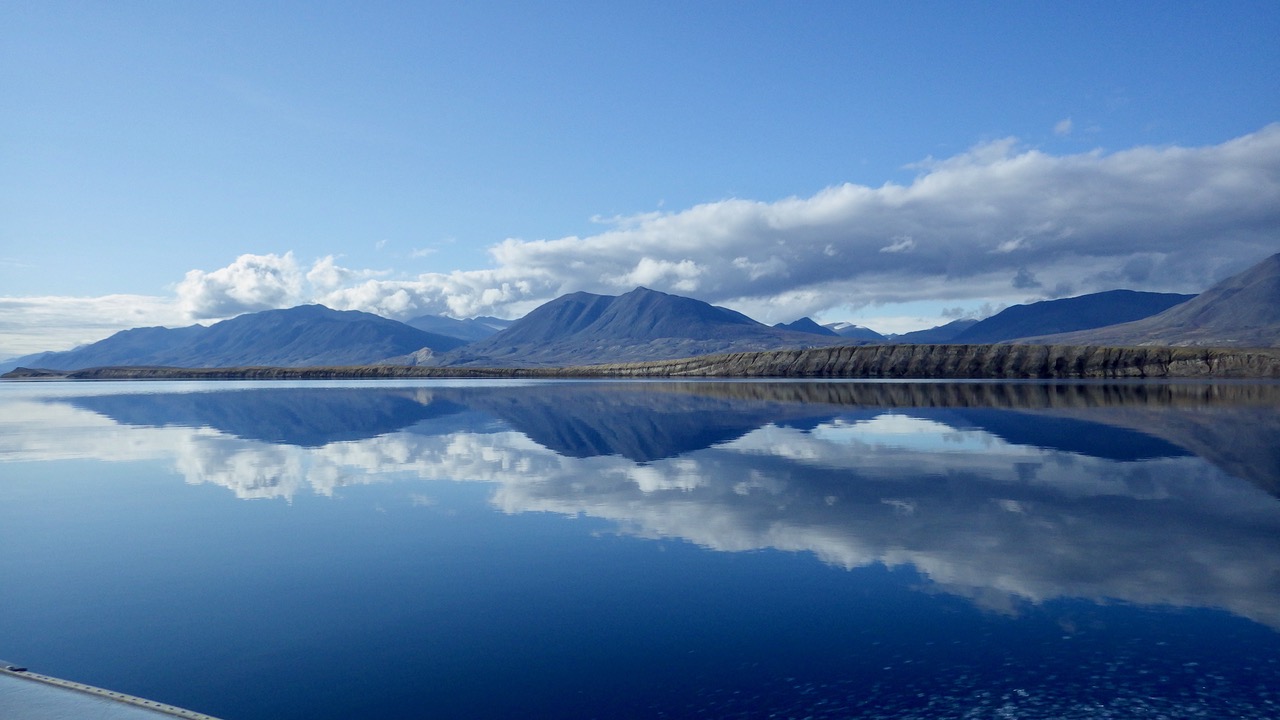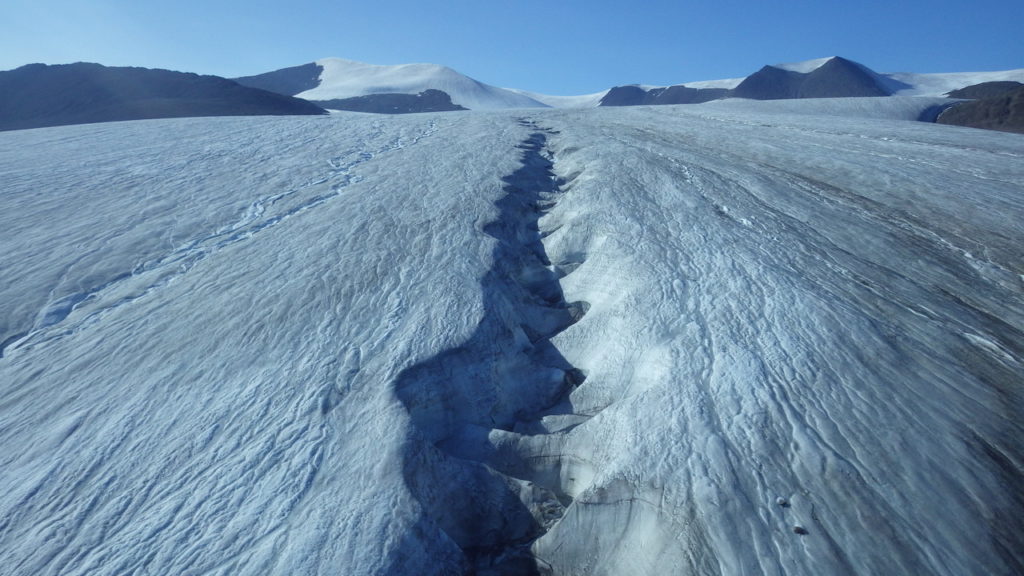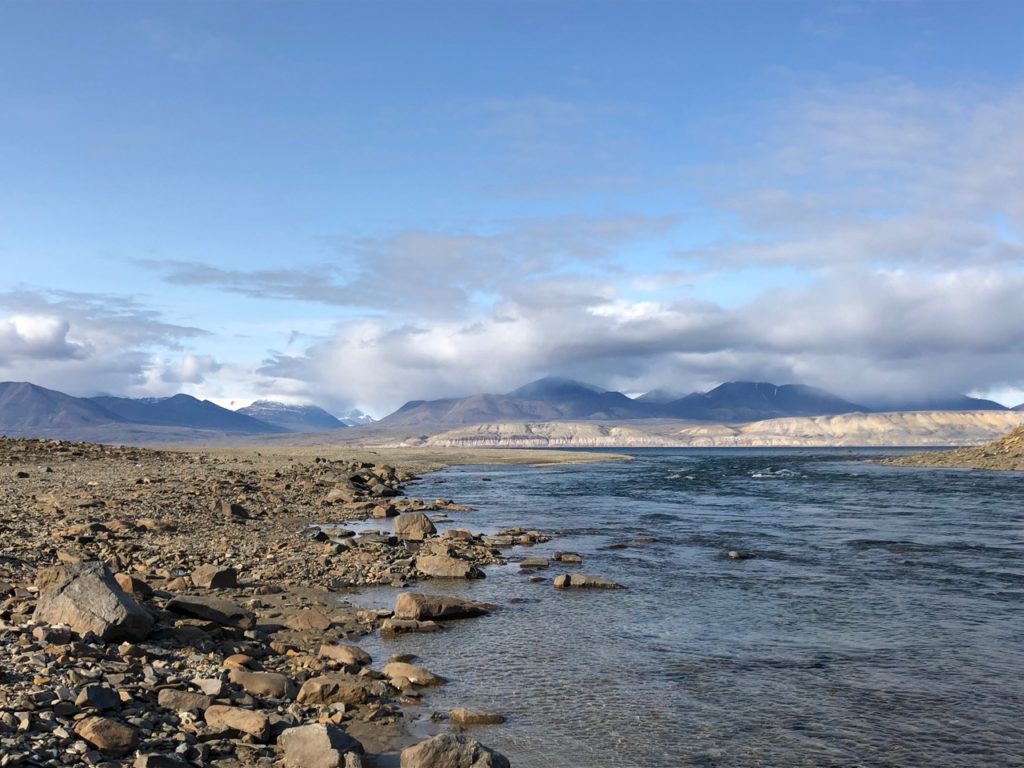Featured Image: Lake Hazen in front of the Grant Land Mountains – photo courtesy Kyra St. Pierre, a co-author of the Sun et al. paper.
Paper: Glacial melt inputs of organophosphate ester flame retardants to the largest High Arctic lake
Authors: Sun, Yuxin, Amilia O. De Silva, Kyra A. St Pierre, Derek C. G. Muir, Christine Spencer, Igor Lehnherr, John J. MacInnis
Far from human habitation Lake Hazen sits north of the Arctic Circle surrounded by pristine, treeless mountains. But even there, the telltale chemical fingerprints of human pollution can be found.
Spring and summer in the far North are a short three-month period of reawakening, glacial melt, and permafrost thaw. During these months, meltwater transports anything that has collected on top of glaciers, like particles, nutrients, and contaminants deposited from the atmosphere, flowing down rivers and into glacial lakes.

Sun and colleagues looked in Lake Hazen and its glacial river tributaries for human-derived pollutants called organophosphate esters. These chemicals are used in things like flame retardants, lubricants, and plasticizers, and they are called persistent organic pollutants because they do not break down easily in the natural environment. In addition to not being easily decomposed, these pollutants have detrimental effects on human health and the environment.
The study by Sun and colleagues shows that glacial rivers and streams receiving permafrost meltwater carry the pollutants, organophosphate esters, into Lake Hazen and onward to the Arctic Ocean. The amount of contaminants in the lake’s tributaries varied over the summer months and was different between the years of this study, 2015 and 2018. These differences could be caused by annual variations in temperature and snow pack, which is the source of most of the meltwater.
Pollutant concentrations were higher in Lake Hazen than in other nearby lakes that do not have glacial meltwater sources. Concentrations were highest in the surface water of Lake Hazen and near the lake bed. Since the pollutants stick to dust and large particles, their concentrations are highest where the particles first enter the lake in surface water and where the particles settle on the bottom of the lake. After particles settle on the lake bed and start to decompose, the pollutants are released into the water. At the lake’s outflow, where the lake drains toward the Arctic Ocean, pollutant concentrations were similar to the Lake Hazen surface water.
One of the most surprising results was that in Lake Hazen the concentrations of chlorinated organophosphate ester pollutants, a subset of the pollutants of interest, were similar to those seen in Lake Erie and Lake Michigan. Lake Erie and Lake Michigan are surrounded by epicenters of industrial activity with many possible locations for pollution and contaminants to enter the lakes.
Sun and colleagues conclude that long-range atmospheric transport brings contaminants released into the environment at lower latitudes to the glaciers near Lake Hazen. Glacial rivers transport those pollutants to the lake, and then the lake acts as a transfer site for the pollutants from the glaciers to the sea. With increasing production of these pollutants, and increasing rates of glacial melting, it is likely that there will be more transport of them into what should be one of the most pristine places on Earth.

Evidence of pollution all the way to the poles by Hadley McIntosh Marcek is licensed under a Creative Commons Attribution-ShareAlike 4.0 International License




Dear Hadley! Thank you for this wonderful synopsis of our paper!